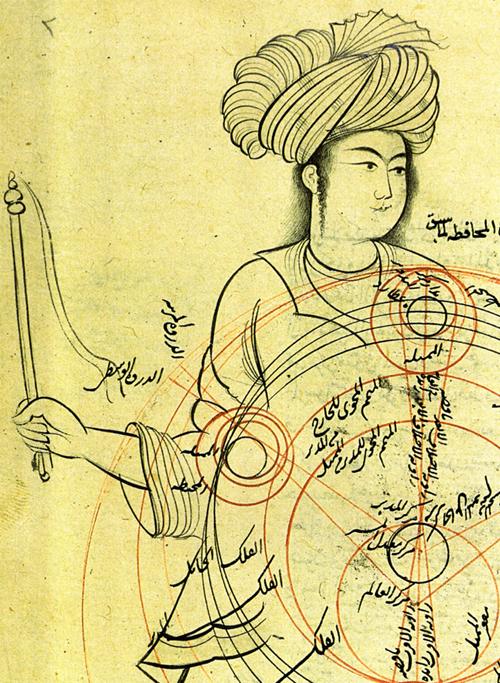|
Al-Nagawri
Shahab al-Din ibn ‘Abd al-Karim Qivam al-Nagawri was a 14th-century Persian physician. Shihab al-Din al-Nagawri composed several medical treatises, including a general handbook composed in 1392 and a short dictionary of drugs. His metrical Persian compendium on therapeutics was written in 1388 and was often known as "Shahab's Medicine" as well as the more formal title ''Shifa' al-maradh'' ("The Healing of Disease"). A considerable amount of autobiographical material is contained in this didactic poem, including that al-Nagawri made his living in trade rather than as a physician. See also * List of Iranian scientists The following is a list of Iranian scientists, engineers, and scholars who lived from antiquity up until the beginning of the modern age. A * Abdul Qadir Gilani (12th century) theologian and philosopher * Abu al-Qasim Muqane'i (10th century) ... References * C.A. Storey, Persian Literature: A Bio-Bibliographical Survey. Volume II, Part 2: E.Medicine (London: ... [...More Info...] [...Related Items...] OR: [Wikipedia] [Google] [Baidu] |
List Of Iranian Scientists
The following is a list of Iranian scientists, engineers, and scholars who lived from antiquity up until the beginning of the modern age. A * Abdul Qadir Gilani (12th century) theologian and philosopher * Abu al-Qasim Muqane'i (10th century) physician * Abu Dawood (c. 817–889), Islamic scholar * Abu Hanifa (699–767), Islamic scholar * Abu Said Gorgani (10th century) * 'Adud al-Dawla (936–983), scientific patron * Ahmad ibn Farrokh (12th century), physician * Ahmad ibn 'Imad al-Din (11th century), physician and chemist * Alavi Shirazi (1670–1747), royal physician in Mughal India * Amuli, Muhammad ibn Mahmud (c. 1300–1352), physician * Abū Ja'far al-Khāzin (900–971), mathematician and astronomer * Ansari, Khwaja Abdullah (1006–1088), Islamic scholar * Aqa-Kermani (18th century), physician * Aqsara'i (?–1379), physician * Abu Hafsa Yazid, physician * Arzani, Muqim (18th century), physician * Astarabadi (15th century), physician * Aufi, Muhammad (1 ... [...More Info...] [...Related Items...] OR: [Wikipedia] [Google] [Baidu] |
Persian People
Persians ( ), or the Persian people (), are an Iranian peoples, Iranian ethnic group from West Asia that came from an earlier group called the Proto-Iranians, which likely split from the Indo-Iranians in 1800 BCE from either Afghanistan or Central Asia. They are indigenous to the Iranian plateau and comprise the majority of the population of Iran.Iran Census Results 2016 United Nations Alongside having a Culture of Iran, common cultural system, they are native speakers of the Persian language and of the Western Iranian languages that are closely related to it. In the Western world, "Persian" was largely understood as a demonym for all Iranians rather than as an ethnonym for the Persian people, but this understanding Name of Iran, shi ... [...More Info...] [...Related Items...] OR: [Wikipedia] [Google] [Baidu] |
Physician
A physician, medical practitioner (British English), medical doctor, or simply doctor is a health professional who practices medicine, which is concerned with promoting, maintaining or restoring health through the Medical education, study, Medical diagnosis, diagnosis, prognosis and therapy, treatment of disease, injury, and other physical and mental impairments. Physicians may focus their practice on certain disease categories, types of patients, and methods of treatment—known as Specialty (medicine), specialities—or they may assume responsibility for the provision of continuing and comprehensive medical care to individuals, families, and communities—known as general practitioner, general practice. Medical practice properly requires both a detailed knowledge of the Discipline (academia), academic disciplines, such as anatomy and physiology, pathophysiology, underlying diseases, and their treatment, which is the science of medicine, and a decent Competence (human resources ... [...More Info...] [...Related Items...] OR: [Wikipedia] [Google] [Baidu] |
14th-century Iranian Physicians
The 14th century lasted from 1 January 1301 (represented by the Roman numerals MCCCI) to 31 December 1400 (MCD). It is estimated that the century witnessed the death of more than 45 million lives from political and natural disasters in both Europe and the Mongol Empire. West Africa experienced economic growth and prosperity. In Europe, the Black Death claimed 25 million lives wiping out one third of the European population while the Kingdom of England and the Kingdom of France fought in the protracted Hundred Years' War after the death of King Charles IV of France led to a claim to the French throne by King Edward III of England. This period is considered the height of chivalry and marks the beginning of strong separate identities for both England and France as well as the foundation of the Italian Renaissance and the Ottoman Empire. In Asia, Tamerlane (Timur), established the Timurid Empire, history's third largest empire to have been ever established by a single conqueror. ... [...More Info...] [...Related Items...] OR: [Wikipedia] [Google] [Baidu] |



